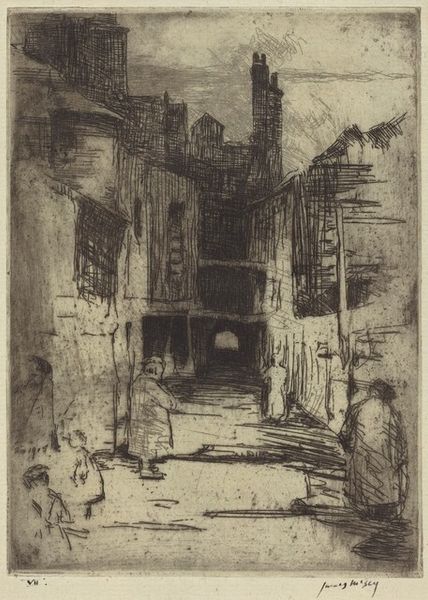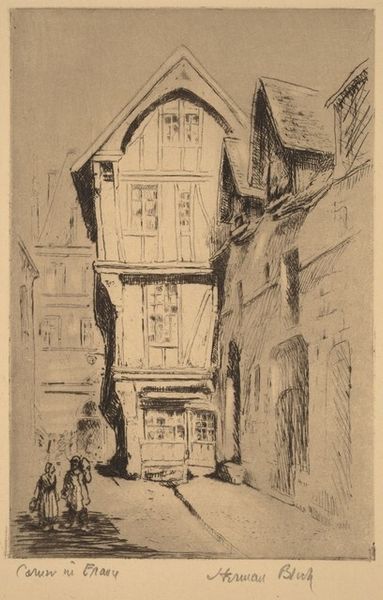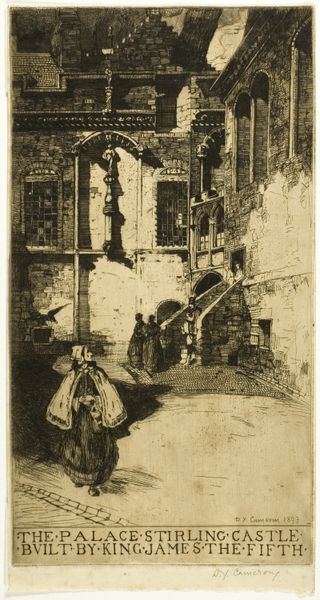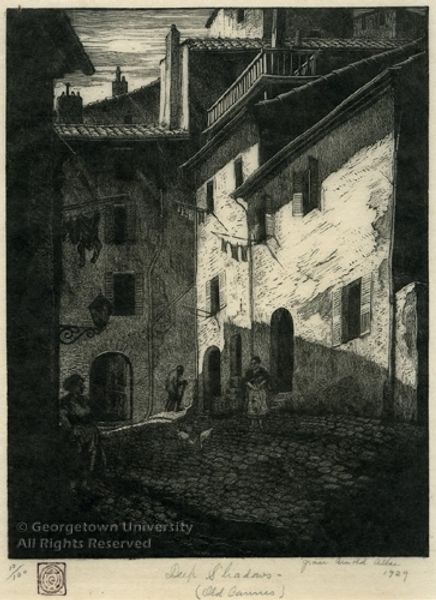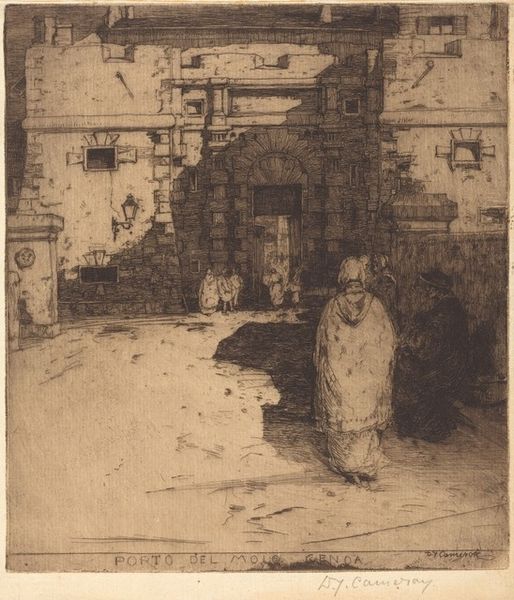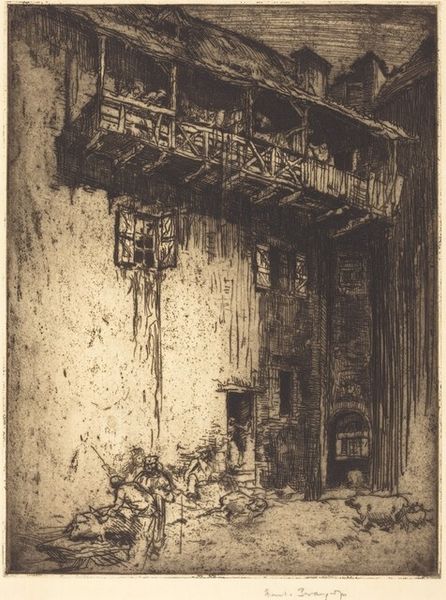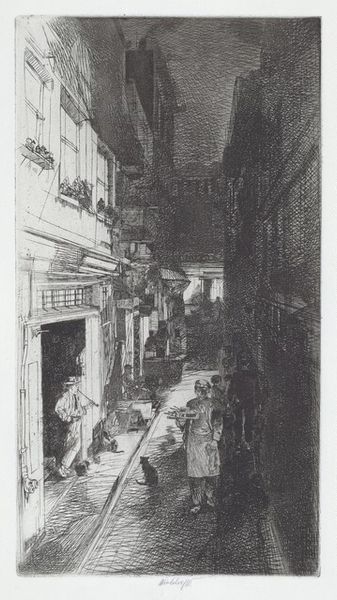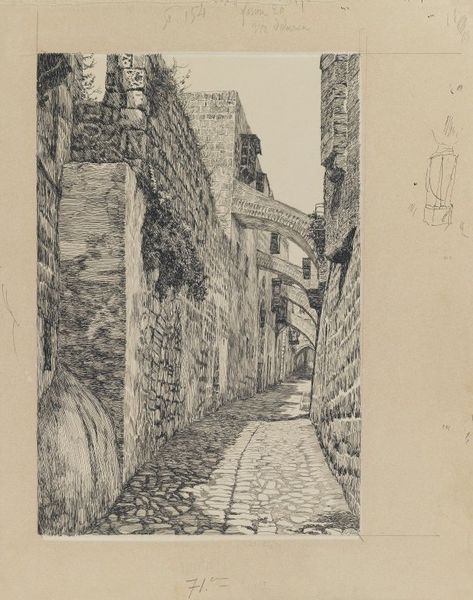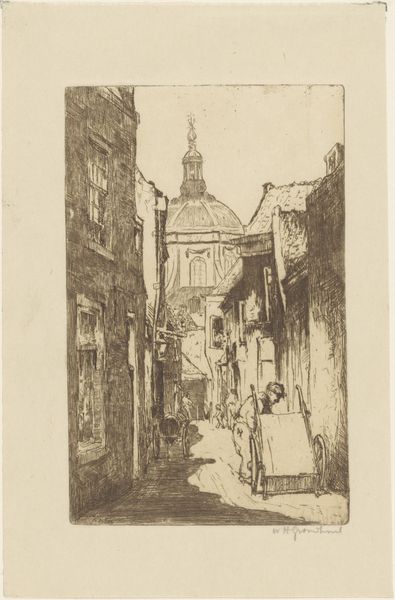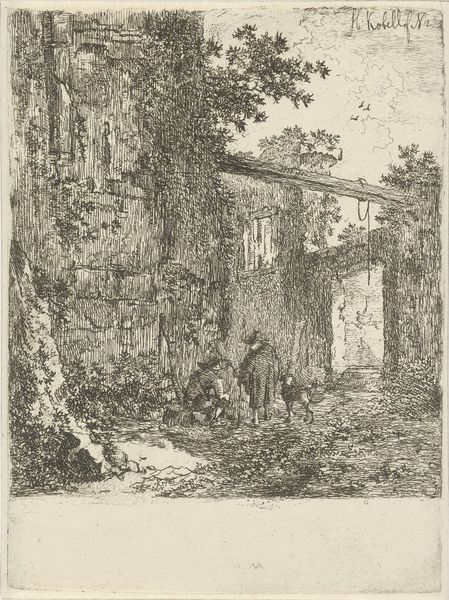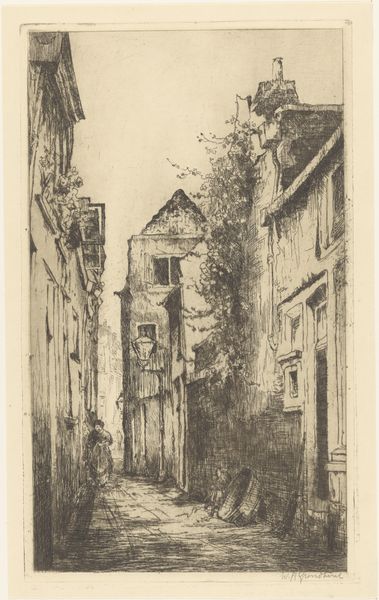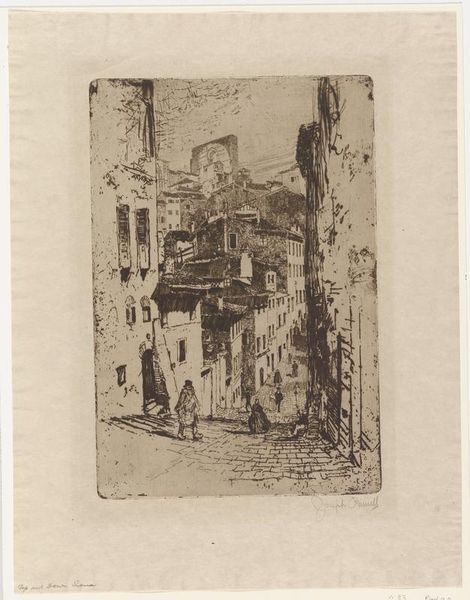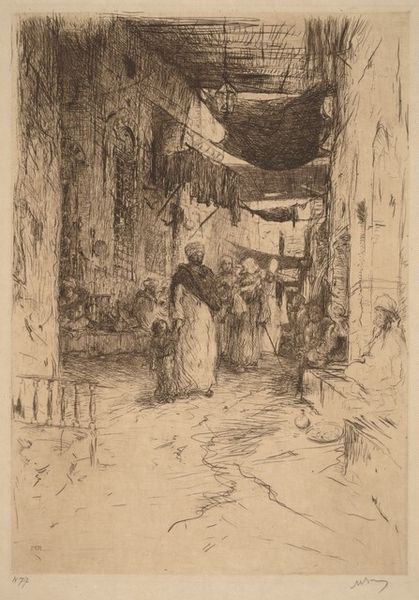
drawing, print, etching
#
drawing
# print
#
etching
#
landscape
#
cityscape
#
realism
Copyright: National Gallery of Art: CC0 1.0
Curator: Welcome. Before you stands “House of the Witch,” an etching by Earl Stetson Crawford. The exact date of the work remains unknown. Editor: The somberness is palpable, isn't it? There's a haunting quality in the aged texture of the walls and the lone figure in the courtyard—a visual manifestation of solitude and decay. Curator: Indeed. Crawford, a keen observer of urban landscapes, often captured overlooked corners of cities. Prints such as these served an important purpose in an age with few photography opportunities or affordable printed media. Etchings became very important. Editor: Which highlights its socio-historical weight—a representation of marginalized spaces, women's labor, poverty. The building isn't grand, its purpose likely domestic, and perhaps hinting at a woman burdened by labor, perhaps an impoverished, urban dwelling. Curator: You note her position near a water source, possibly engaged in some kind of necessary domestic work. The architecture itself has clearly degraded significantly, implying some kind of decline, either economic, political or otherwise. We also should notice how her pose with her head angled down communicates burden. Editor: Agreed, the posture and bucket are suggestive. The architectural rendering could be read in conversation with class struggle. Consider that such domestic space for many women in these conditions was also workspace. It’s hard to extract the female body from this depiction of gendered labor in private, yet still visible space. Curator: A compelling argument. It also allows me to think about what this representation does to how and why etchings become meaningful consumer objects in society. Do they highlight or do they obscure power dynamics? Do they humanize, or do they render difference other? Editor: Perhaps the etching enables a degree of empathetic viewing, bringing viewers—who, in their own homes may feel safe and empowered—face-to-face with a world they would not otherwise access. But I still worry if those aesthetic considerations simply gloss over genuine inequalities, transforming a marginalized experience into picturesque melancholia. Curator: A crucial tension that demands reckoning! Editor: The discussion itself illuminates the crucial layers woven within this intricate artwork. Curator: Precisely, an important work. We must carry on investigating it within those conflicting social tensions that exist to this day.
Comments
No comments
Be the first to comment and join the conversation on the ultimate creative platform.
